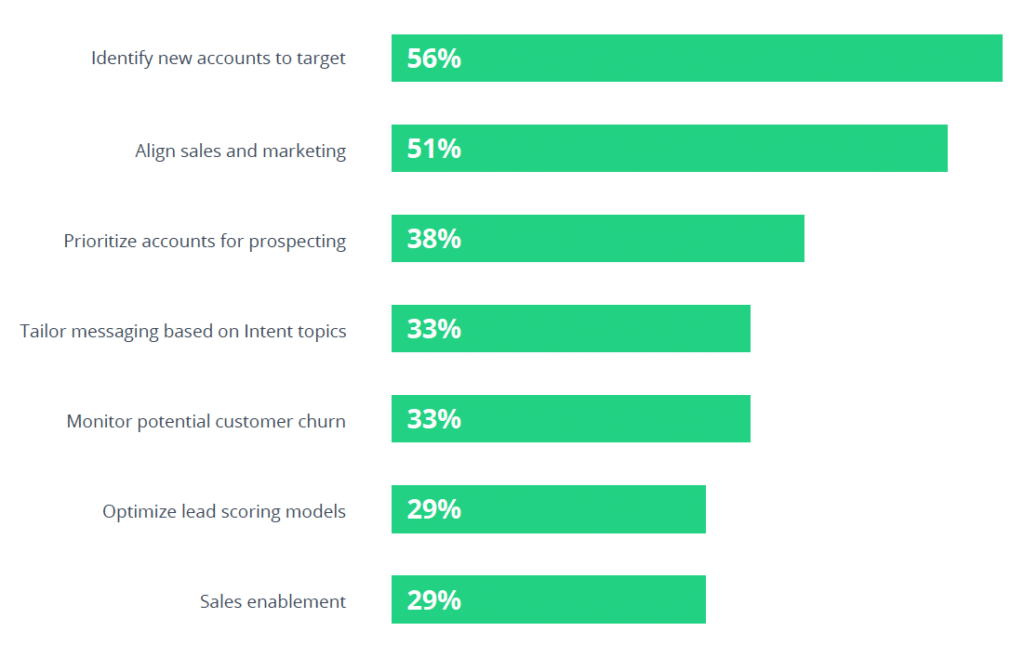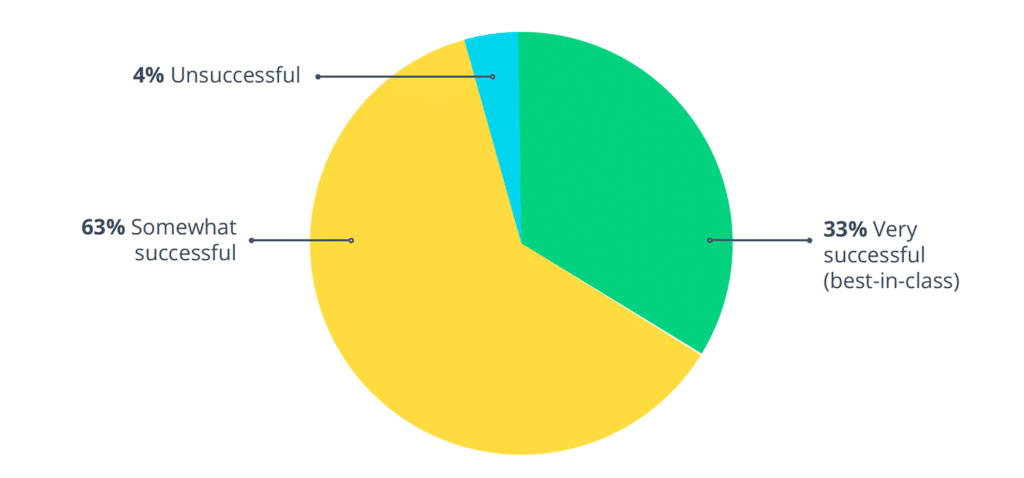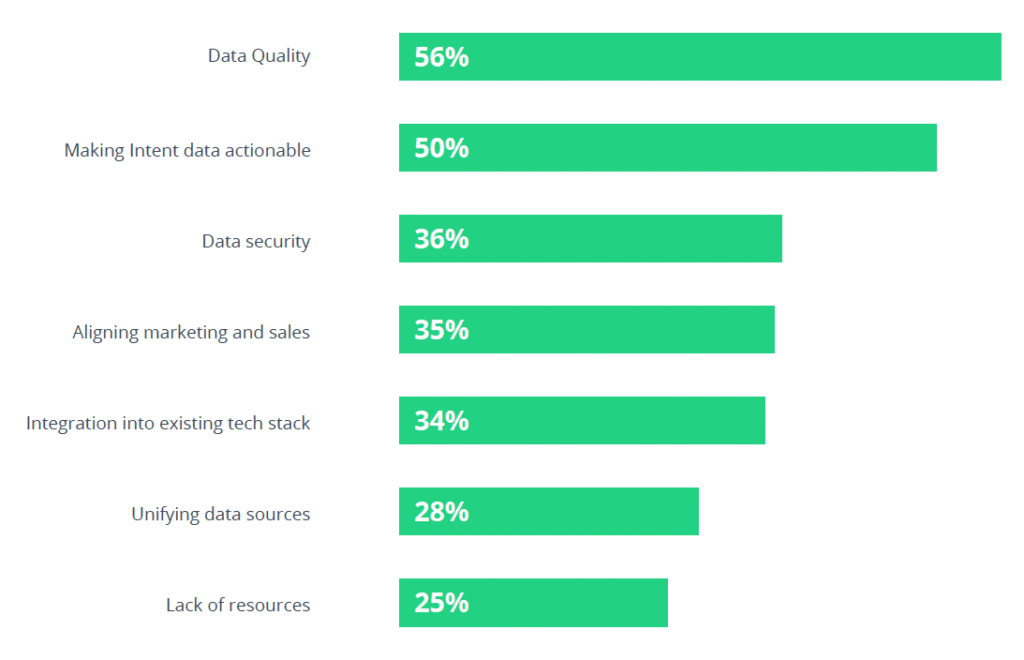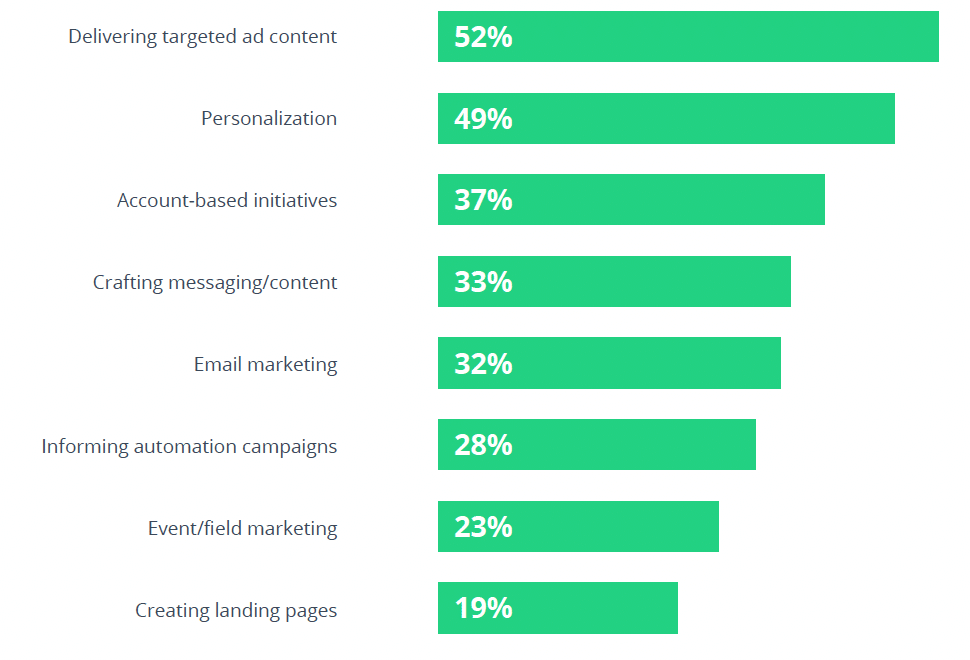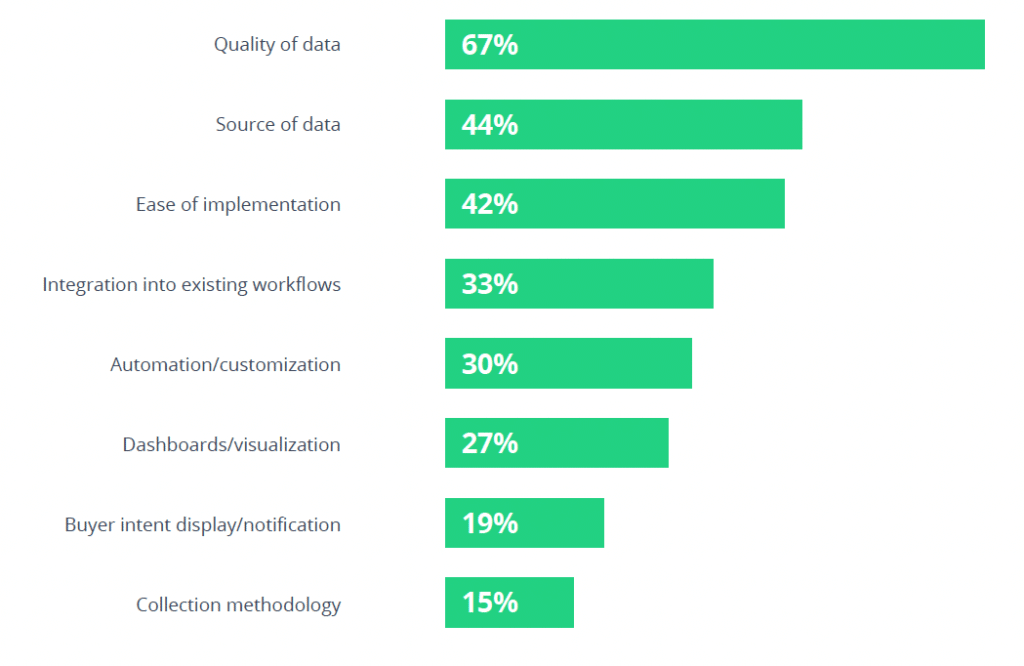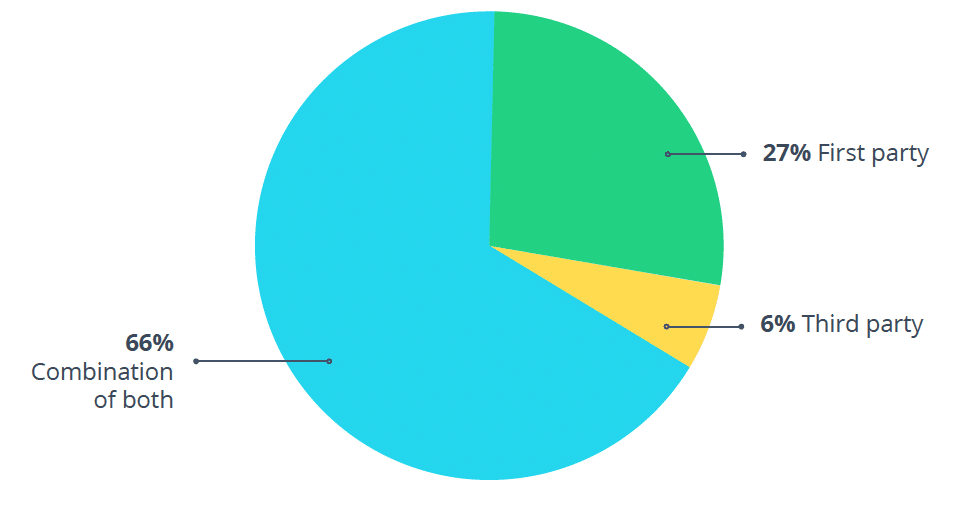Advancing competitive advantage with Intent data
Intent data. It’s not just another phrase in a growing list of overwhelming B2B jargon. Its dynamic, account-level information on content consumption across the web can be used to identify interested, in-market prospects and reach them with more contextual, personalized messaging.
In fact, according to our latest partnership research effort with RollWorks and Ascend2, 97% of B2B marketers believe Intent data will give brands a competitive advantage in 2022.
There’s no doubt B2B marketers have more information at their fingertips than ever before, but how exactly can they use Intent data to gain a more competitive position in achieving market leadership, and ultimately increase marketing ROI?
To help answer this question, RollWorks and Bombora, in partnership with Ascend2, fielded the ‘Using Intent data’ Survey. The resulting report, The B2B Perspective on Using Intent data and webinar, exclusively represents the opinions of marketers responding to the survey whose businesses operate in the B2B marketing and sales space.
The 2021 State of Intent Data in B2B Marketing
The survey’s results make it clear that Intent data is quickly becoming an essential part of performance-driven B2B marketing, with nearly three-quarters (73%) of respondents reporting they are already using, rolling out, or planning to use Intent data in 2021.
TIP: Because Intent data provides valuable insights into early-stage buying cycles, it gives you a more holistic view of what your prospects are looking to learn more about. This information enables marketing and sales teams to prioritize prospects, nurture account lists with relevant messaging across the funnel, and mine those late-stage funnel leads with campaigns that matter the most to their decision-making.
Main uses of Intent data in 2021
Based on the above, it’s evident that B2B marketers continue to adopt the use of Intent data primarily for prospecting efforts. Identifying new accounts to target, aligning sales and marketing efforts, and prioritizing accounts for prospecting are at the top of the list of primary objectives—according to 56%, 51%, and 38% of survey participants, respectively.
Why Intent data is critical to creating a thoughtful marketing strategy
Layering in Intent data helps marketers achieve a wide range of objectives, from early-stage prospecting to identifying at-risk customers and reducing churn. That said, establishing a clear and deliberate set of goals around using Intent data is crucial to the overall success of your strategy.
TIP: As you prioritize your goals, review Bombora’s wide selection of case studies on how B2B companies are meeting their goals for new accounts, prioritizing accounts, and more to understand how Intent data can increase marketing ROI for your organization.
Is Intent data effective at increasing B2B growth?
Which best describes the overall SUCCESS of your (or your typical client’s) use of Intent data at achieving associated goals?
The ways in which brands use Intent data are rapidly evolving, so it’s crucial to constantly evaluate marketing goals in order to gauge success. But if there’s one thing clear from the survey, Intent data is effective in finding the prospects that matter the most to your ABM pipeline.
Nearly all B2B marketing professionals that were surveyed experienced at least some success at achieving the goals associated with the use of Intent data. One-third, however, define the success of their Intent data strategy as “best-in-class” compared to the competition.
TIP: Choosing intent topics to identify accounts in early buying cycles and running targeted digital advertising campaigns against them can maximize the effectiveness of your marketing spend by engaging prospects with the highest propensity to buy.
Top challenges associated with Intent data
For 56% of B2B marketers, the quality of data is a major challenge when using Intent data—and half of those surveyed report having trouble making Intent data actionable.
Surprised to see a lack of resources ranks so low on this list? Then you might not be using Intent data to its full capability. Intent data should give insight into where to focus resources, allowing you to drive marketing and sales efforts more strategically.
TIP: Intent data, verified and credibly sourced from privacy-compliant Co-Ops can be seamlessly integrated into platforms like RollWorks. This enables marketers to quickly take action on insights and drive scalable account growth while feeling secure and confident in the quality of data they’re using to increase marketing ROI. Learn more.
How to use Intent data to accelerate growth
Intent data is key in leveraging personalization across various channels. About half of B2B marketers report delivering targeted ad content (52%) and personalization efforts (49%) are the most actionable ways to use Intent data. From ad copy to landing pages, to the subject lines in sales outreach, many areas of content marketing and messaging can be tailored with assistance from Intent data.
TIP: If you’re running an account-based marketing (ABM) program, Intent data can be used to help support the tactic’s three main pillars:
- Identify targets using monitoring intent signals
- Engage with targeted content and personalization
- Measure to increase or reduce your investment based on performance
See tech company, Snowflake’s, process for SDR-ABM collaboration here.
How to select the right Intent data solution for your business?
When adding an Intent data solution to a wider, more holistic marketing strategy, it’s crucial to first evaluate your organization’s goals to precisely define what you’ll need to get the job done. This prevents bloating your tech stack with superficial assets and paying for unnecessary tools.
So what’s the most important factor for B2B marketers when weighing options for an Intent data vendor or solution? Around 67% of marketers are more concerned with the quality of data being delivered while 44% report the source of data is of utmost importance.
Did you know? Intent data is being incorporated into a variety of platform types such as MAP, ABM, and CRM. Bombora’s diverse ecosystem of integrations includes marketing and sales enablement leaders such as Marketo, Hubspot, and Salesforce so you can leverage Intent data to prospect with precision without leaving the platform.
Which type of Intent data resonates the most?
Where should marketers be sourcing their data? Two-thirds of B2B marketers report using a combination of first-party data (or engagement data from your own digital assets) and third-party data (data depicting behaviors and signals outside of your owned properties.
Layering first-party data with data from other providers can create a comprehensive picture of a buyer’s needs and illustrate the best way to take action.
TIP: If you’re not using third-party Intent data, consider it as a viable option for boosting your target audience reach and marketing ROI. Your competitors already incorporating third-party Intent data into their strategies are getting in front of valuable accounts first.
How Intent data provides a competitive advantage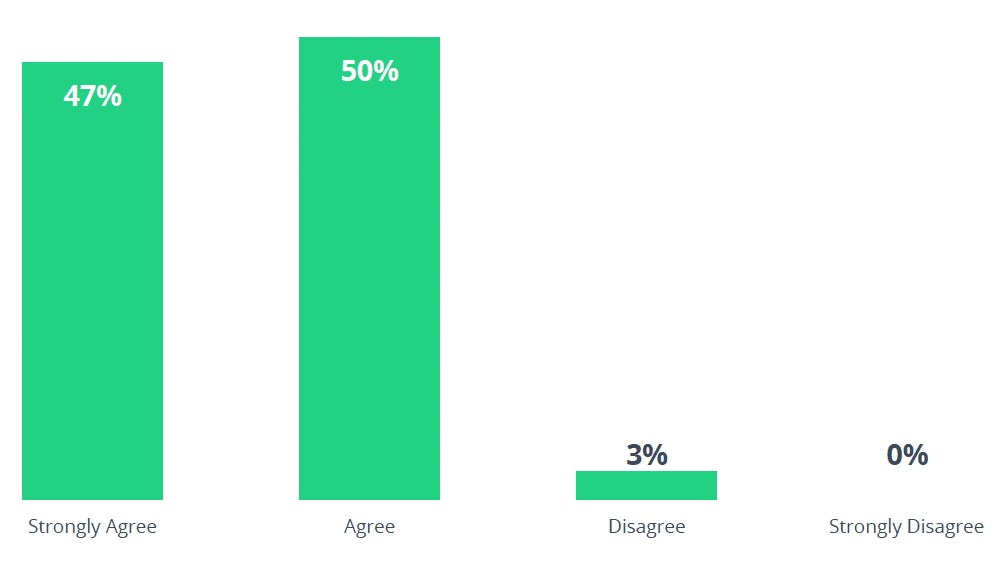
Intent data isn’t only important to a marketing strategy, especially when we’re talking about account-based tactics. Both marketing and sales teams can, and should, use Intent data insights to prioritize their efforts toward “ready-to-buy” prospects. Having this view into buyer behavior before they’ve directly interacted with your organization allows you to act fast and gain a true competitive advantage.
TIP: Speed cannot be overlooked as target accounts can quickly choose a competitor or move onto other priorities. Don’t believe it? OneLogin doubled email reply rates and drove a 10% increase in the sales pipeline. Learn more in this case study.
This research has been produced for you to leverage in your own marketing strategies to increase your ABM pipeline and accelerate marketing ROI. Feel free to clip the charts, write about them in your blog, or post them on social media, but please share this research credited as published.



